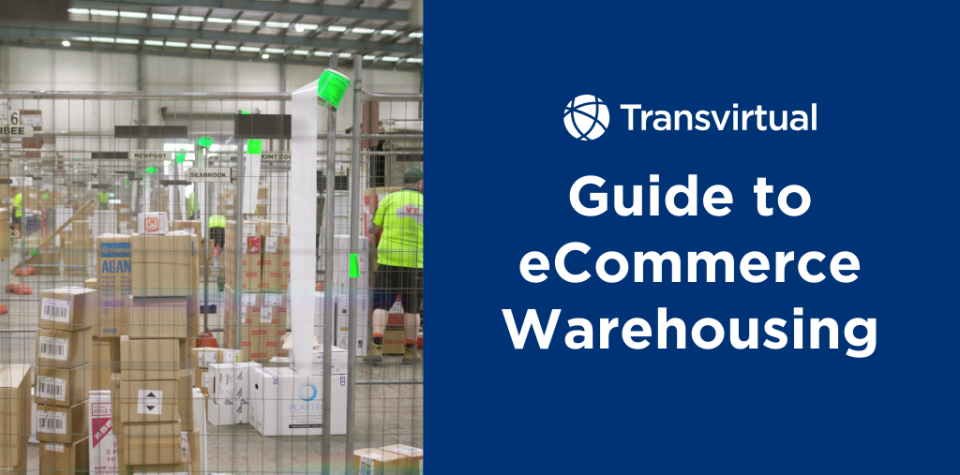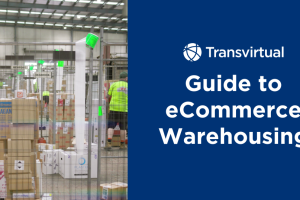Table of Contents
Let’s face it. Running an ecommerce landscape is a highly competitive one. These days, your customers are looking for a sleek, efficient, and satisfying shopping experience that meets all their needs in rapid time.
And a large part of meeting — and surpassing — these customer ideals revolves around optimising ecommerce warehouse management.
In this article, we are going to take a step-by-step approach you can use to optimize your own ecommerce warehouse, with a particular focus on leveraging an ecommerce warehouse management system and other logistics software for maximum effectiveness.
So roll up your sleeves and let’s dive in!
What is Ecommerce Warehousing?
So many businesses have either switched to or started their own ecommerce store. If you ever found yourself doing these, you’ll need to understand how the ecommerce supply chain works, an important factor of which is strategic ecommerce warehouse management.
While its common for businesses to use traditional warehousing for their storage needs, these setups aren’t necessarily built to handle the demands of ecommerce. Some unique industry requirements include the space and amenities needed, the orders received, and fluctuating demand.
Enter ecommerce warehousing.
Ecommerce warehouse management refers to the process of storing, tracking, and managing products sold online, including securing inventory, real-time stock updates, and ensuring timely order fulfillment.
They’re typically run by a fulfillment center managed by third-party providers or 3PLs. The 3PL then manages their network using warehouse management systems, ensuring timely communication with their clients.
At the same time, businesses are still able to track and manage inventory in real-time while also saving time and money in the long run.
The Benefits of Efficient Ecommerce Warehousing
Efficient ecommerce warehouses can bring numerous benefits to your ecommerce store. Some of the key advantages include:
Improved Supply Chain Efficiency: Ecommerce warehousing helps streamline the supply chain process, reducing errors and delays.
Reduced Costs: By optimising inventory management and storage space, ecommerce businesses can reduce costs associated with warehousing and shipping.
Increased Customer Satisfaction: Efficient ecommerce warehouses enable timely order fulfillment, leading to higher customer satisfaction and loyalty.
Scalability: Ecommerce warehousing solutions can scale with the business, accommodating growing demand and inventory needs.
Different Types of Ecommerce Warehouses
There are various types of ecommerce warehouses, each with its unique characteristics and benefits. Some of the most common types include:
Private Warehouses: Owned and operated by a single company, private warehouses offer customized storage solutions and control over inventory management.
Public Warehouses: Owned and operated by third-party logistics providers, public warehouses offer shared storage space and economies of scale.
Fulfillment Centers: Specialized warehouses that handle both storage and order fulfillment, fulfillment centers are ideal for businesses with high-volume sales.
Dropshipping Warehouses: Warehouses that store and ship products directly to customers, dropshipping warehouses are popular among businesses with limited storage space.
Choosing the Right Ecommerce Warehouse for Your Business
Choosing the right warehouse for your ecommerce business will depend on several factors, including the size and type of products, inventory volume, and storage needs. When selecting a warehouse, consider the following:
Location: Proximity to customers, suppliers, and transportation hubs can impact shipping costs and delivery times.
Storage Capacity: Ensure the warehouse has sufficient space to accommodate your inventory needs.
Security: Look for warehouses with robust security measures to protect your products and inventory.
Technology: Consider warehouses with advanced technology, such as warehouse management software, to streamline inventory management and order fulfillment.
Step 1: Assess Your Current Warehouse Operations
Take a look around your existing warehouse operations (or lack thereof!). Identify bottlenecks, inefficiencies, and areas that require improvement. Ask your staff what works and what doesn’t. This evaluation lays the groundwork for creating an optimized workflow across your entire warehouse.
Step 2: Implement a Warehouse Management System
Invest in a robust inventory management system or work with a 3PL provider that already has one. This will allow you to track your inventory levels in real-time, automate stock replenishment, and accurately fulfil orders. Inventory management software will streamline your inventory processes, reduce the number of picking errors, and enable you to maintain optimal stock levels.
Step 3: Embrace Warehouse Automation
Technology is there to be used, so make your warehouse work smarter by leveraging automation technologies such as conveyor belts, barcode scanners, and automated sorting systems. Automation of these operations in your warehouse will result in fewer errors, accelerate order processing, and maximize space utilization in your facility. Industrial vending machines provide businesses with an efficient way to manage inventory and reduce waste, ensuring that essential supplies are always available when needed.
Step 4: Optimize Warehouse Layout and Organization
Analyse your warehouse layout and ensure that products are logically organized for easy picking and replenishment. You can consider using signage and labelling systems to guide employees to the correct part of the warehouse and minimize search time. Effective WMS software that identifies the location of each product within your warehouse can help you achieve this.
Step 5: Forecast future demand
Demand forecasting software can anticipate customer trends very accurately. By analysing market direction, customer behaviour and historical data, you can optimize your inventory levels and plan for seasonal spikes. This will help to prevent stock outs or (heaven forbid) being overstocked with products that aren’t shifting.
Step 6: Adopt Efficient Order Fulfilment Strategies
Order fulfilment strategies such as wave picking, batch picking, or zone picking can be adapted to fit your particular business’s needs. And you can combine these strategies with real-time inventory updates and logistics software to improve order accuracy and speed.
Step 7: Integrate Shipping and Logistics Software
This software provides end-to-end visibility of shipments from initial orders to final delivery and beyond. These systems can automate label printing, manage carrier selection, and optimize shipping routes, which will help to lower your costs and improve customer satisfaction.
Step 8: Implement Quality Control Measures
Feedback from customers along with regular audits, spot checks and quality inspections will allow you to identify and resolve issues promptly. By doing this, you can ensure that your customers receive undamaged products and minimize returns and customer dissatisfaction.
Step 9: Enhance Staff Training and Communication
Comprehensive and fun training programs will empower your warehouse staff with the necessary skills and knowledge they need to operate your warehouse efficiently. By encouraging effective communication channels within the warehouse, you’ll facilitate staff collaboration, address challenges more easily, and foster a culture of continuous improvement in your company. To make training sessions more engaging, consider using the best AI for presentations to create helpful content that captures your staff’s attention.
Step 10: Monitor Key Performance Indicators (KPIs)
Order accuracy, picking efficiency, inventory turnover, and fulfilment time are key performance indicators you can use to improve your warehouse systems. By utilizing logistics software you can generate insightful reports and analytics, enabling you to make data-driven decisions on further optimization strategies.
Step 11: Continuously Adapt and Improve
Warehouse optimization is an ongoing process. You need to continuously monitor customer preferences, industry trends, and advancements in logistics technology. Think on your feet, stay agile and adapt your warehouse operations to maintain efficiency and stay ahead of the competition.
Overcoming Challenges with a 3PL
Third-party logistics (3PL) providers can help ecommerce businesses overcome common challenges associated with ecommerce warehousing. Some of the benefits of partnering with a 3PL include:
Expertise: 3PL providers have extensive experience in ecommerce warehousing and logistics.
Scalability: 3PL providers can scale with your business, accommodating growing demand and inventory needs.
Cost Savings: 3PL providers can help reduce costs associated with warehousing, shipping, and inventory management.
Technology: 3PL providers often have advanced technology, such as warehouse management software, to streamline inventory management and order fulfillment.
Implement Effective Ecommerce Warehouse Management
Success in ecommerce isn’t just about attracting customers and making sales. It’s also about delivering exceptional customer experiences and continuously keeping your eye out for ways to improve.
Optimising your ecommerce warehouse for efficiency and scalability is a multifaceted process that requires a strategic approach and the right tools.
By leveraging the power of freight, warehousing, and transport software, and undertaking some or all of the steps we’ve outlined here, you can streamline your operations, reduce overheads, bolster customer satisfaction, and position your business for long-term success.



